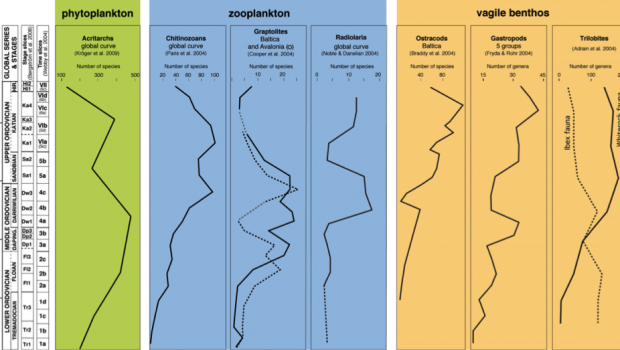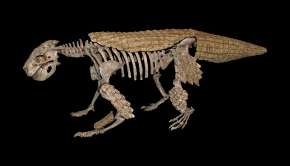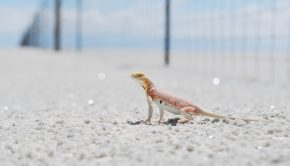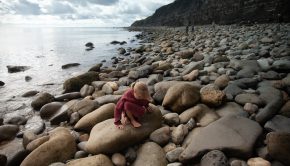Episode 19: The Great Ordovician Biodiversification Event
The Great Ordovician Biodiversification Event, or ‘GOBE’, describes one of the most important increases in biodiversity in the history of life on earth. During a relatively short time span of some 25 million years, an explosion of new species, genera and families appeared. This increase in diversity was accompanied by an increase in ecosystem complexity. Plankton and suspension feeding organisms rapidly diversified and became important constituents of the food web. At the same time, large predators, such as the orthoconic nautiloids, evolved to exploit them. This biodiversity ‘explosion’ coincided with a dynamic period in earth’s history during which continents were shifting, mountains were raised and massive volcanism occurred.
Joining us to try and untangle the causes and consequences of this complex and fascinating period is Prof. David Harper of Durham University, UK.
Podcast: Download ()
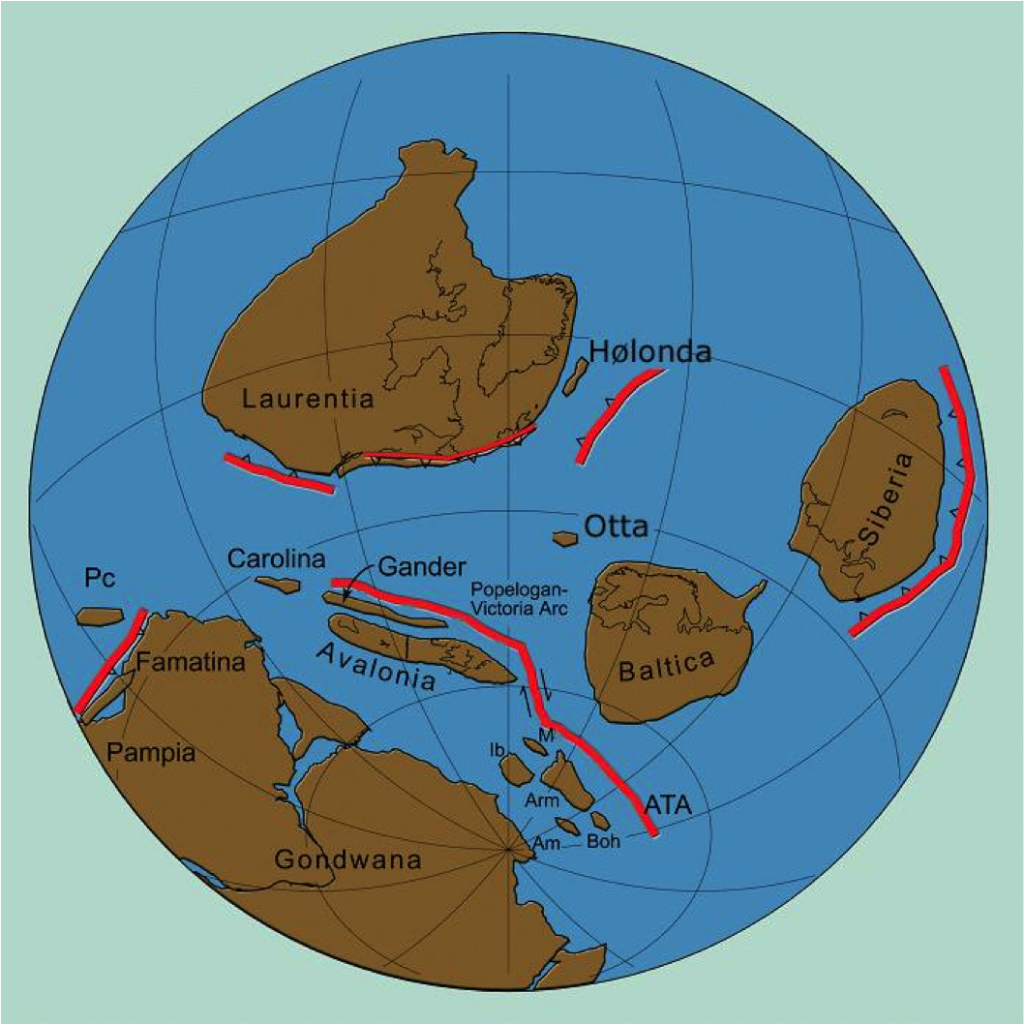
During the Ordovician the Earth looked very different. The continents were mostly restricted to the southern hemisphere and clustered around the south pole. There were many microcontinents, such as Avalonia (Southern British Isles and Newfoundland). There were also many volcanic arcs (depicted in the diagram as red lines). Image courtesy of Conall Mac Niocaill, all rights reserved.
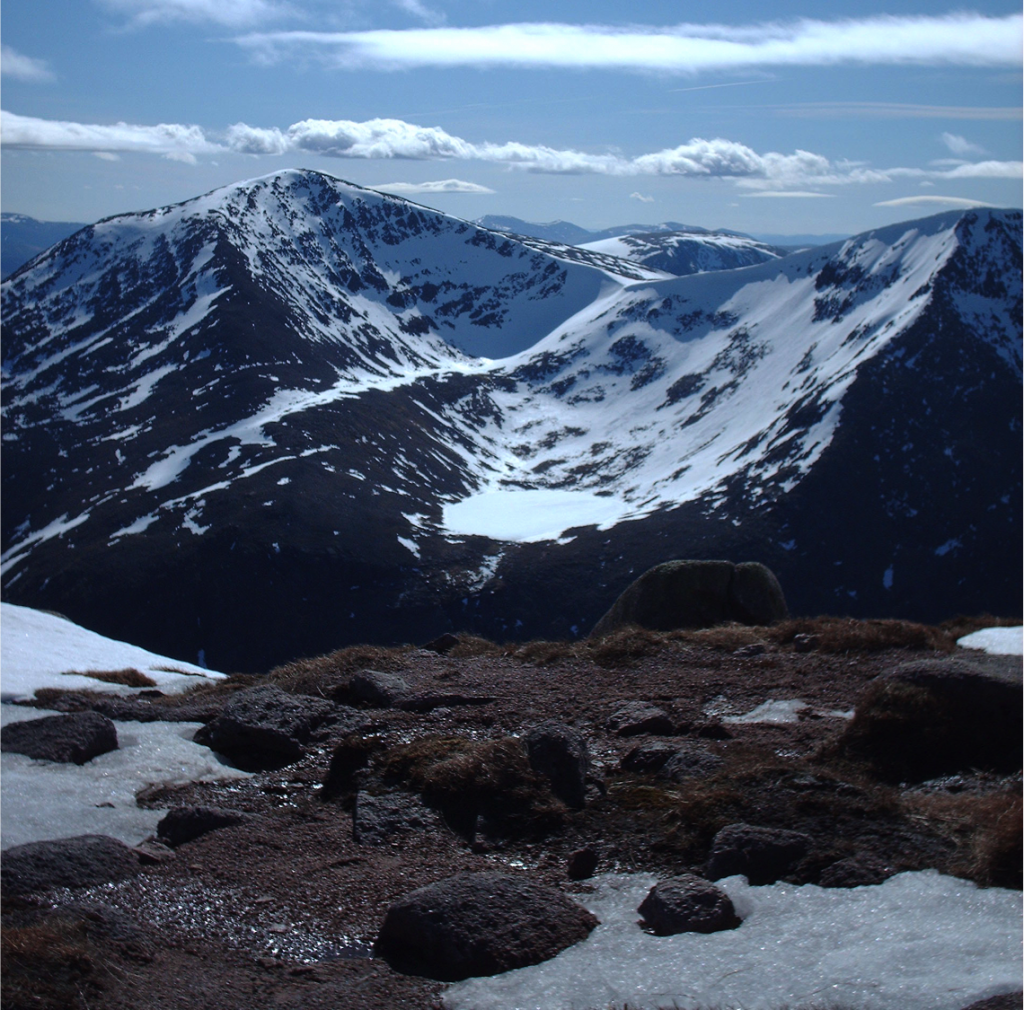
The Ordovician marked an interval of dynamic tectonic activity. It was a time of rapid sea floor spreading, which resulted in the separation and dispersal of microcontinents. One of these microcontinents, called Avalonia, began to drift on a collision course with Laurentia (North America, Greenland and Northern British Isles). This resulted in mountain building during the Ordovician to Early Devonian, raising the Appalachians, Scottish Highlands (pictured) and Scandinavian mountains. Photo: Wikimedia Public Domain.
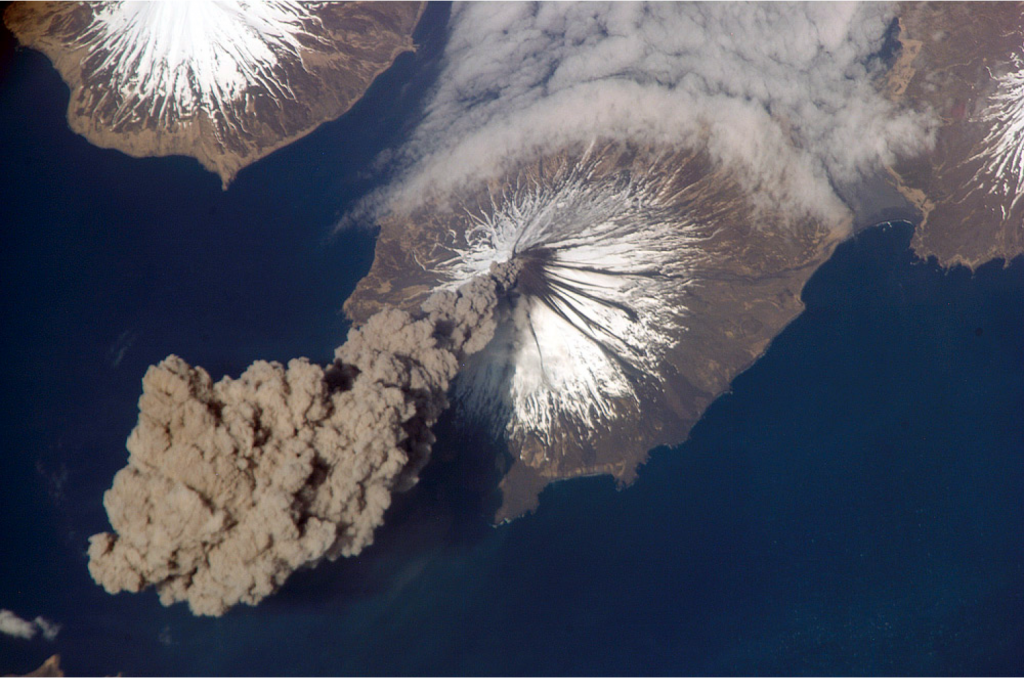
The dynamic tectonic activity during the Ordovician also produced extensive volcanism and formed island arcs similar to the present day Aleutian Islands (pictured). All this volcanic activity resulted in the formation of massive ash deposits, called bentonites. Photo: NASA Public Domain.
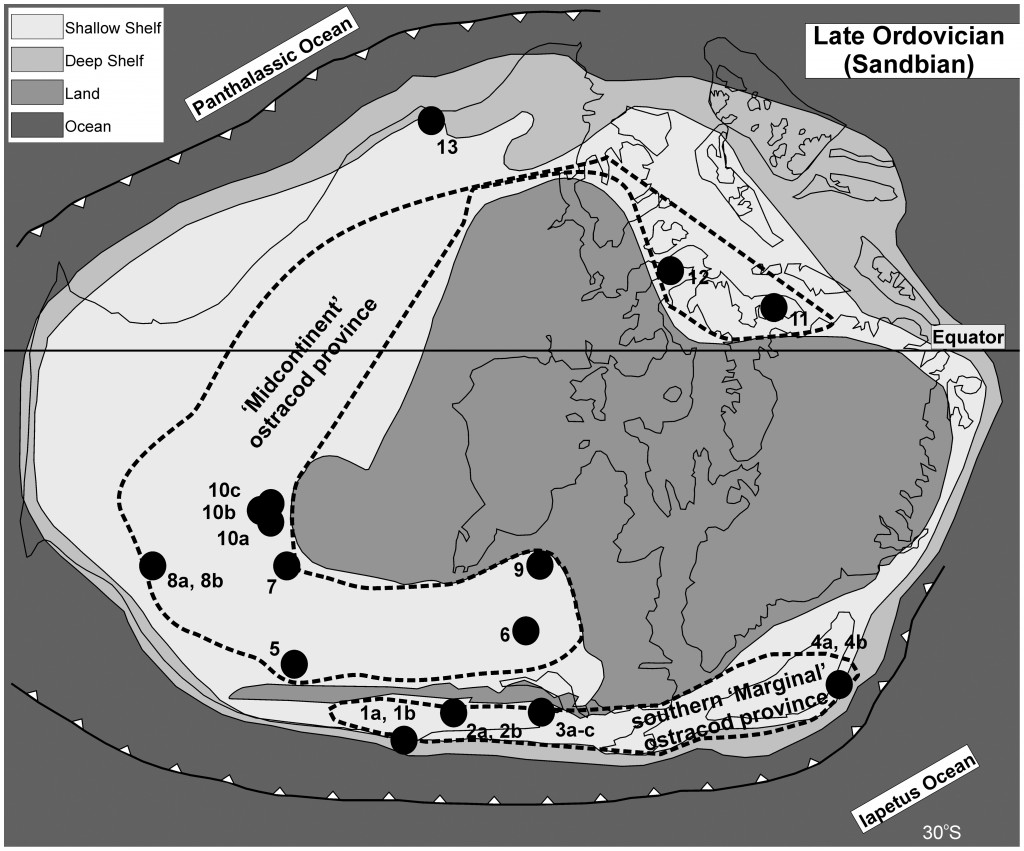
Sea levels were much higher during the Ordovician (by as much as 200 meters). Because of this, much of the continents were flooded by shallow seas. The diagram above shows the extent of the shallow seas covering the continent of Laurentia during the Late Ordovician. Figure from Mohibullah et al. (2012) PLoS ONE, doi:10.1371/journal.pone.0041682. Licence: CC-BY.
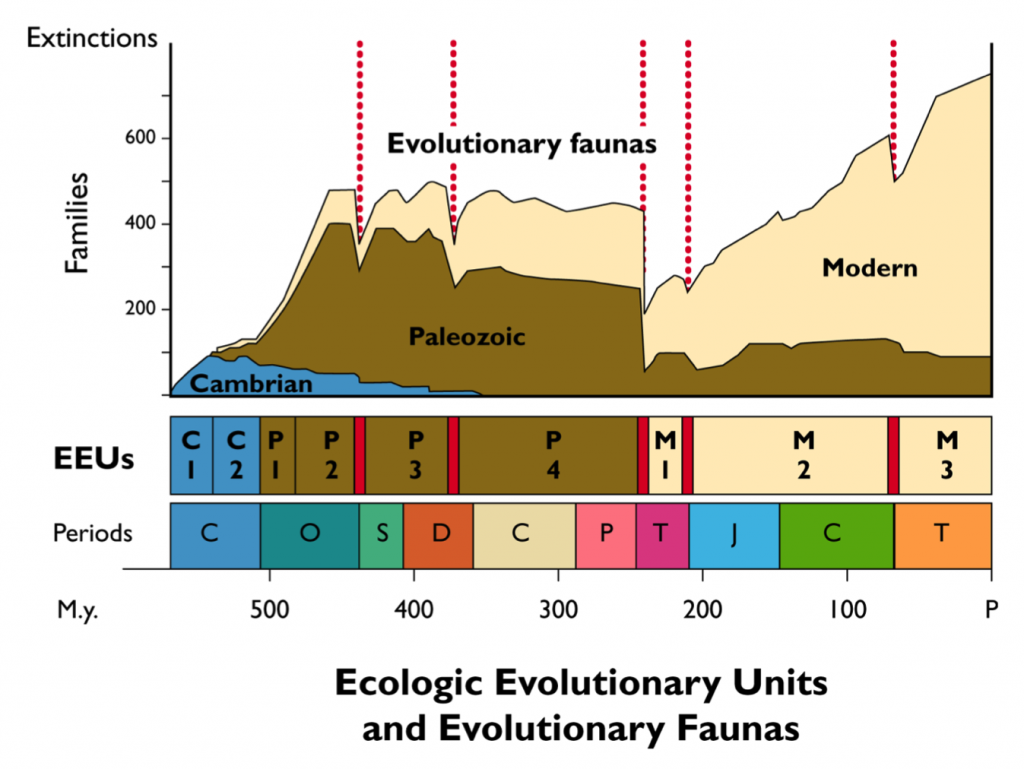
Marine animal life can be subdivided into three great evolutionary faunas. The steep rise in the Ordovician signals the GOBE that establishes the Palaeozoic plateau of biodiversity. During this period, the Palaeozoic fauna replaces the Cambrian fauna as the dominant constituent of global diversity. Image modified from various publications by David Harper, Jack Sepkoski and Peter Sheehan, all rights reserved.
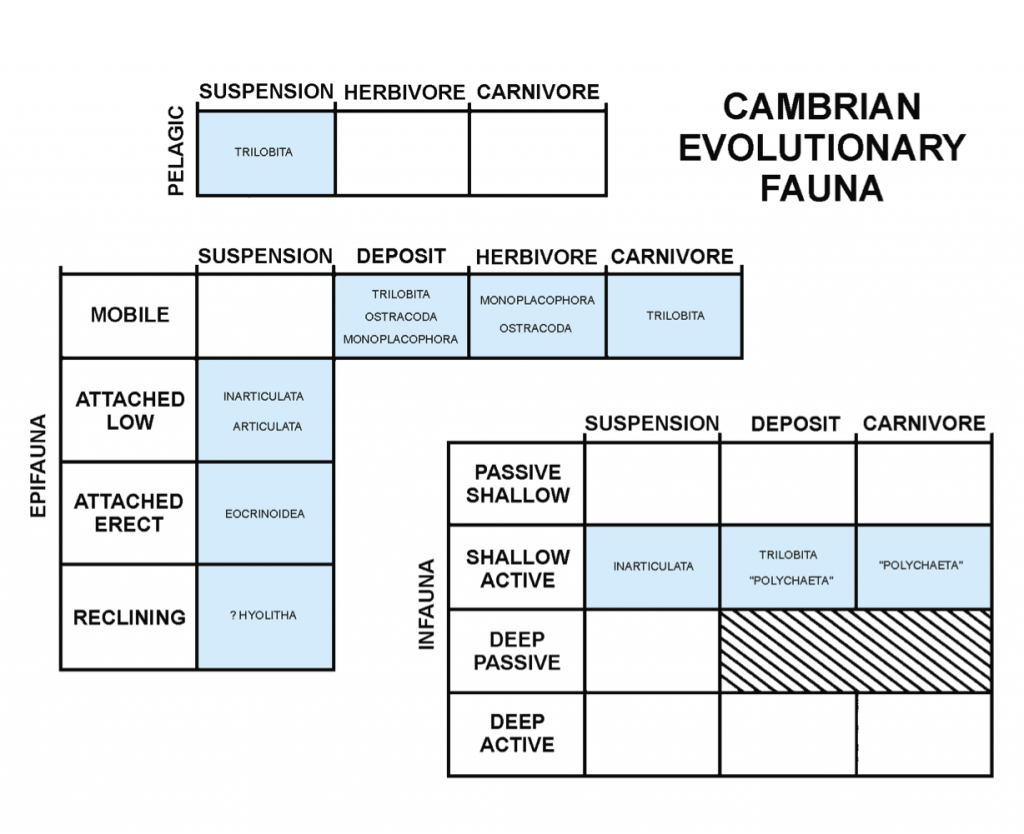
We can subdivide these evolutionary faunas into guilds; groups of species that exploit the same resources in similar ways. In the Cambrian there are relatively few guilds with low diversity. Replotted from Richard Bambach’s various publications, all rights reserved.
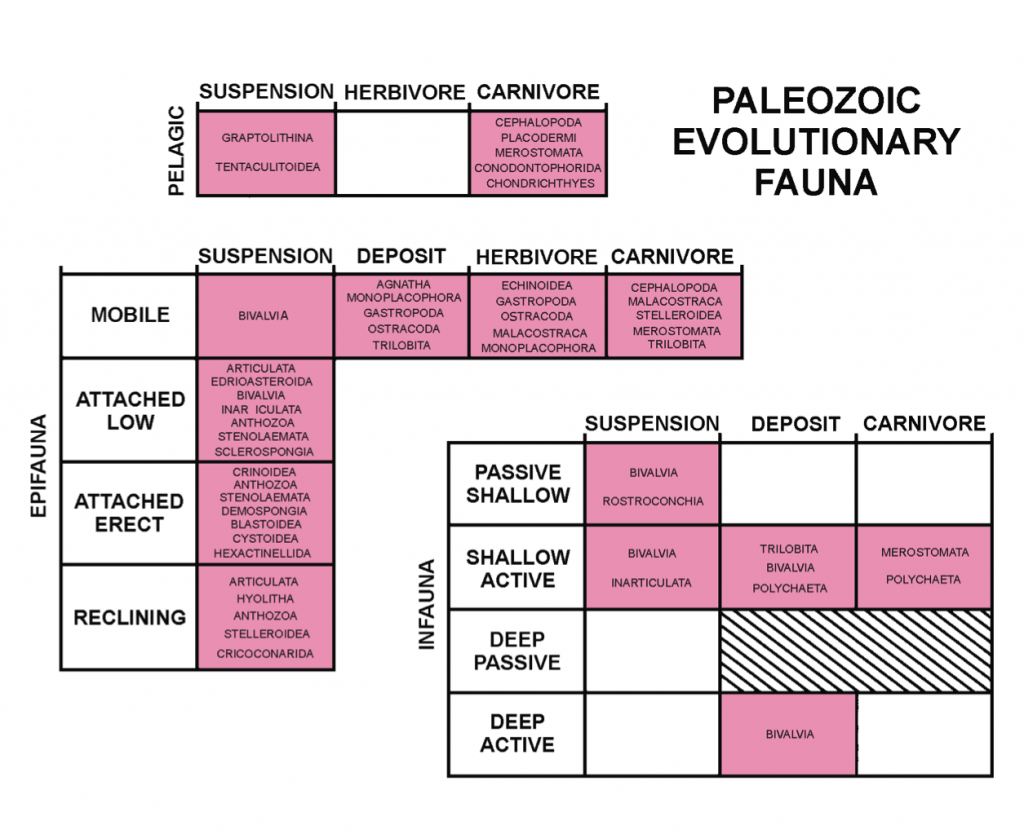
In contrast the Palaeozoic fauna, which rose to dominance during the GOBE, demonstrates a greater number of ecological guilds with higher diversity. Replotted from Richard Bambach’s various publications, all rights reserved.
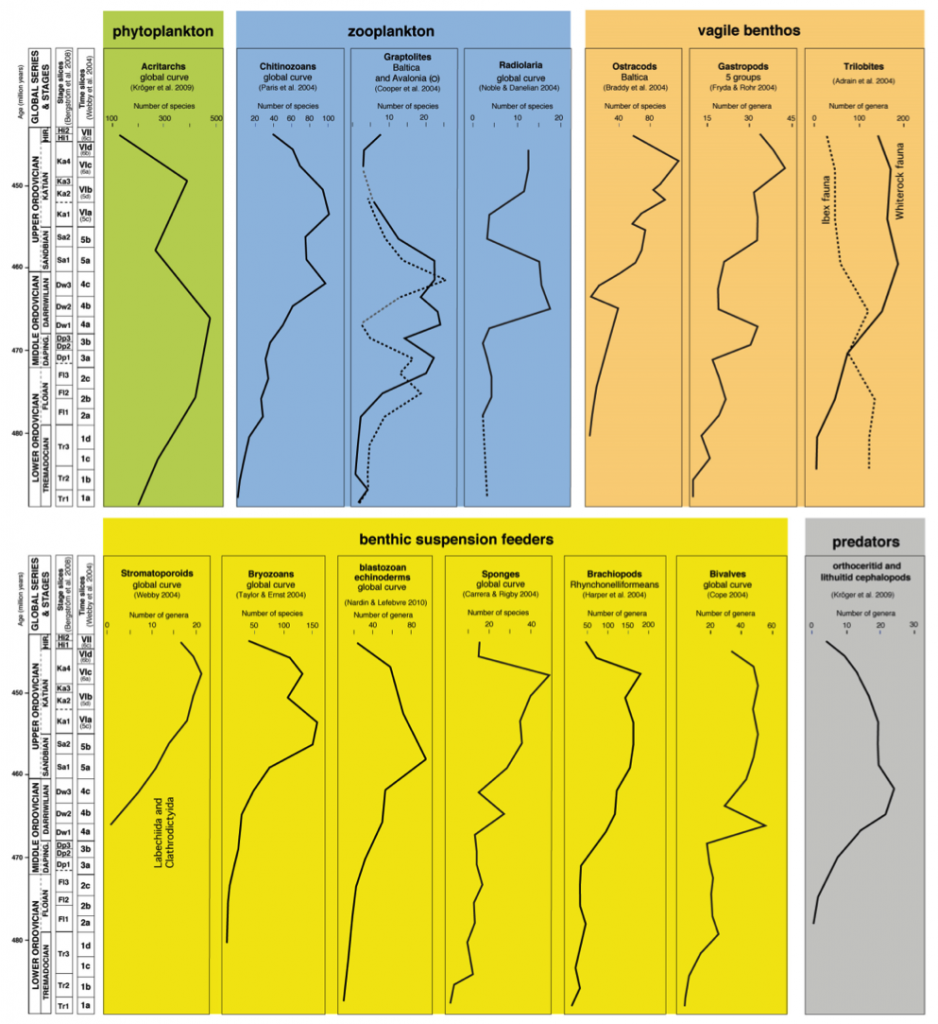
A dramatic rise in diversity of planktonic organisms is matched by an increase in diversity of suspension feeders and predators. Diagram courtesy of Thomas Servais, all rights reserved.
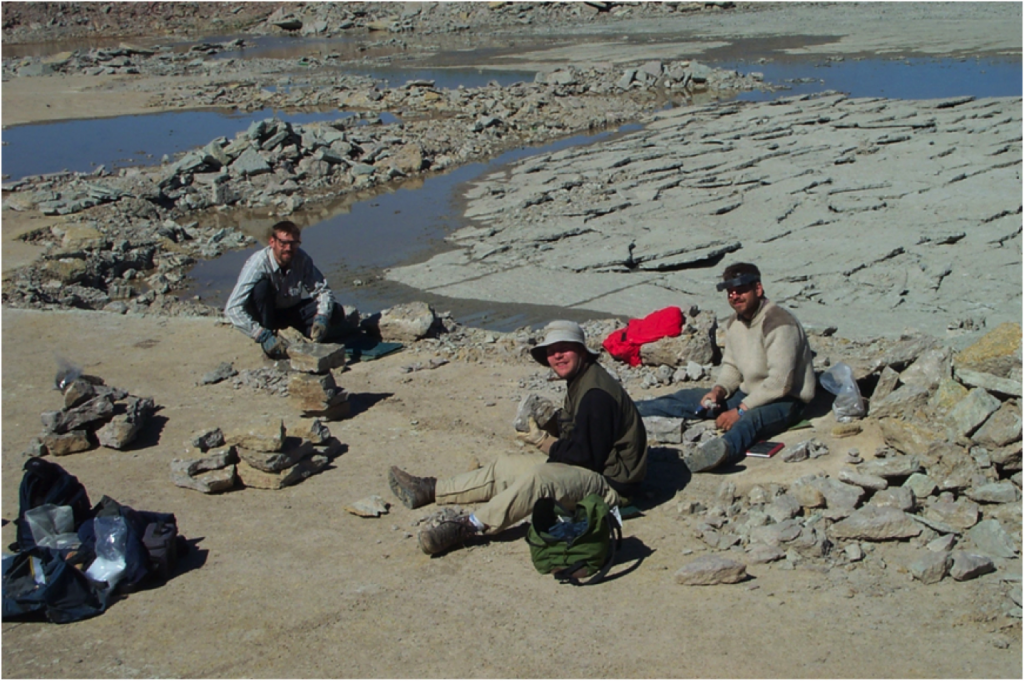
Understanding changes in global biodivesification requires meticulous fossil collecting around the globe. This field photo shows bed-by-bed collecting through the GOBE in Putilivo Quarry, western Russia.
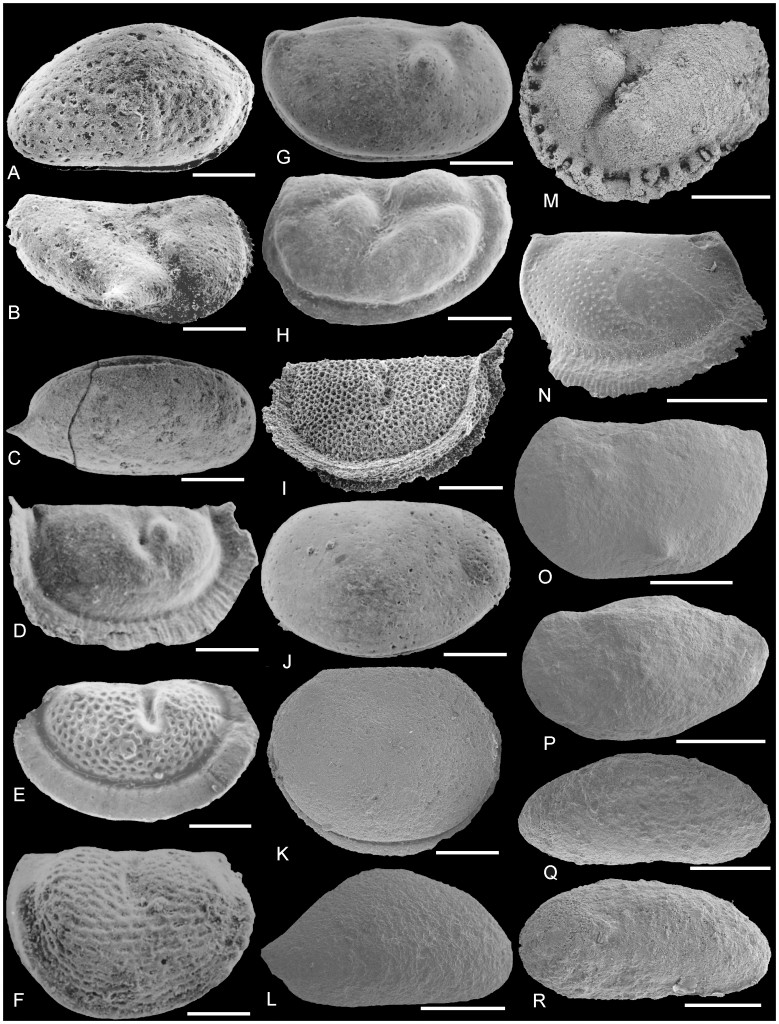
Once new fossils are discovered in the field, they need to be scientifically described, figured and published in papers and monographs. These taxonomic descriptions provide the raw data for investigating both regional and global biodiversification events. The photographic plate above depicts species of marine ostracod (a type of crustacean) recovered from the mid-continent and margins of Laurentia during the Late Ordovician. Figure from Mohibullah et al. (2012) PLoS ONE, doi:10.1371/journal.pone.0041682. Licence: CC-BY.
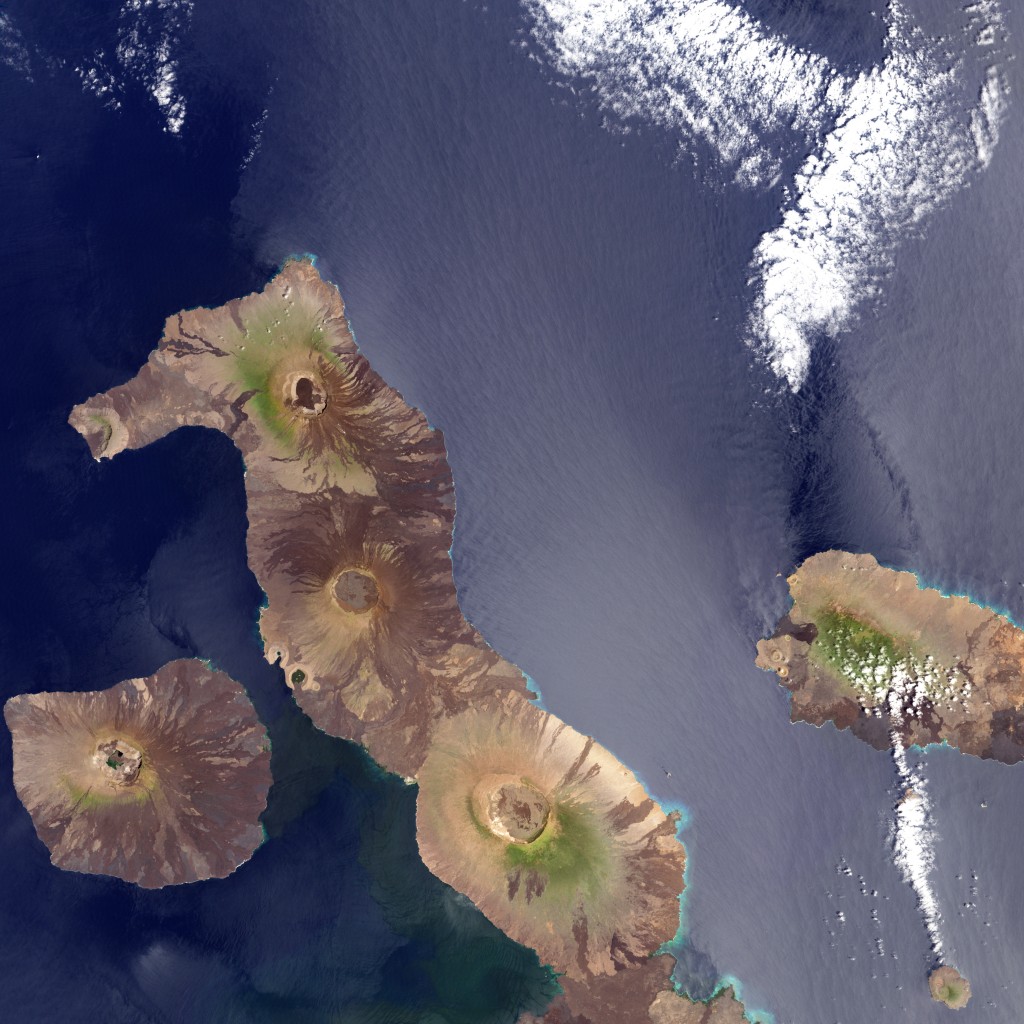
The GOBE is a complex interval and its causes are no less difficult to understand. It is likely that an interplay of different factors, rather than a single cause, triggered the explosion of diversity. We can separate these into external (environmental) and internal (biotic) factors. Among external factors that previously been proposed is the ‘Island Effect’. Islands, such as the Galapogos (pictured), are often centres of biodiversification due to their isolation. The abundance of microcontinents and island arcs, which formed during the GOBE, may have therefore increased diversity. Photo: NASA / USGS Public Domain.
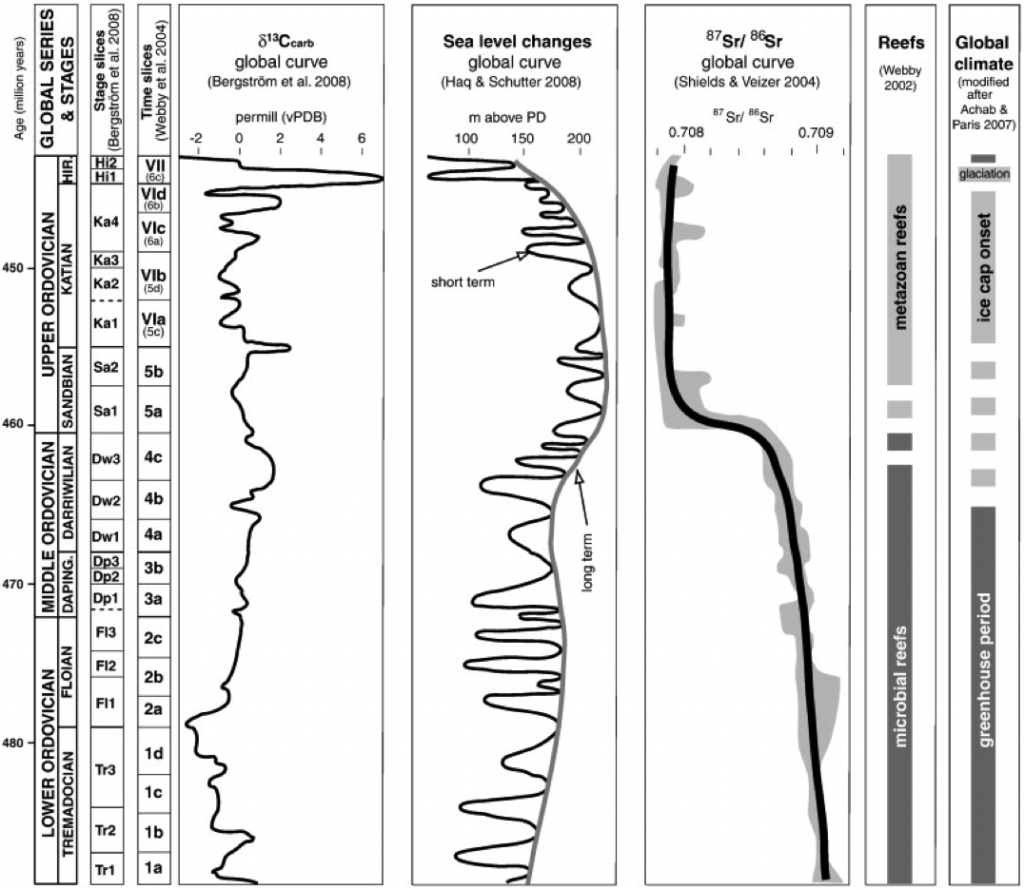
Another possible external factor is global cooling. The diagram above shows sea level together with several chemical proxies for global climate. Fairly recently it has been proposed that a general cooling trend took place during the Ordovician which may have been a passive driver of diversification. Diagram courtesy of Axel Munnecke, all rights reserved.
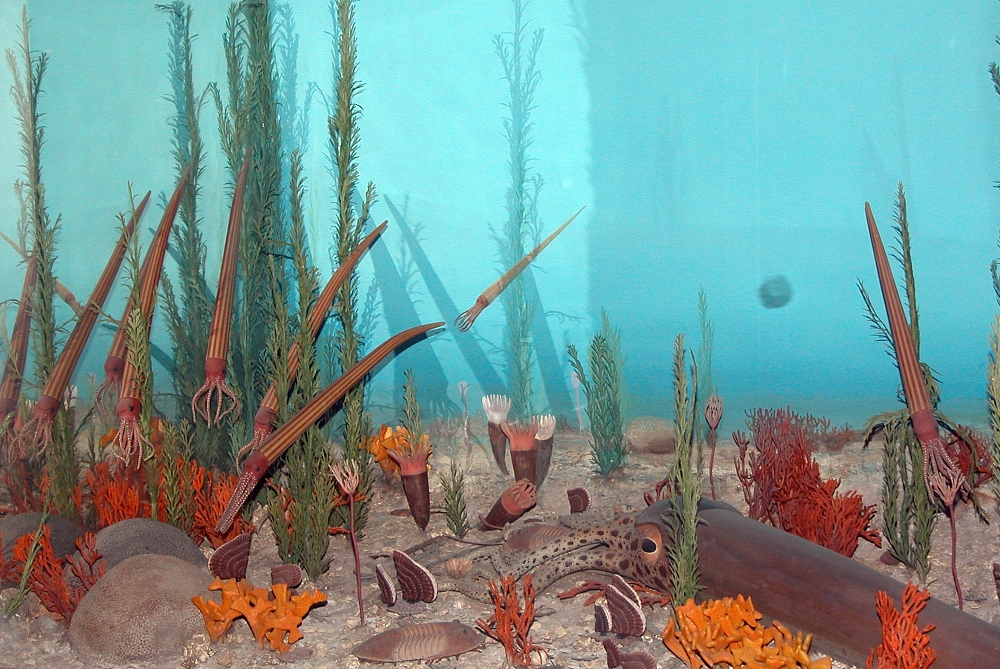
As well as external factors, internal biotic factors may have contributed to the global biodiversification event. It has been suggested that the rise of large predators such as the orthoconic nautiloids (pictured above) may have lead to an evolutionary arms race with their shelled prey. As predators became more efficient at crushing shells of their prey, the prey was under selective pressure to evolve more elaborate armour and spines. Photo: Wikimedia. Licence: CC-BY.
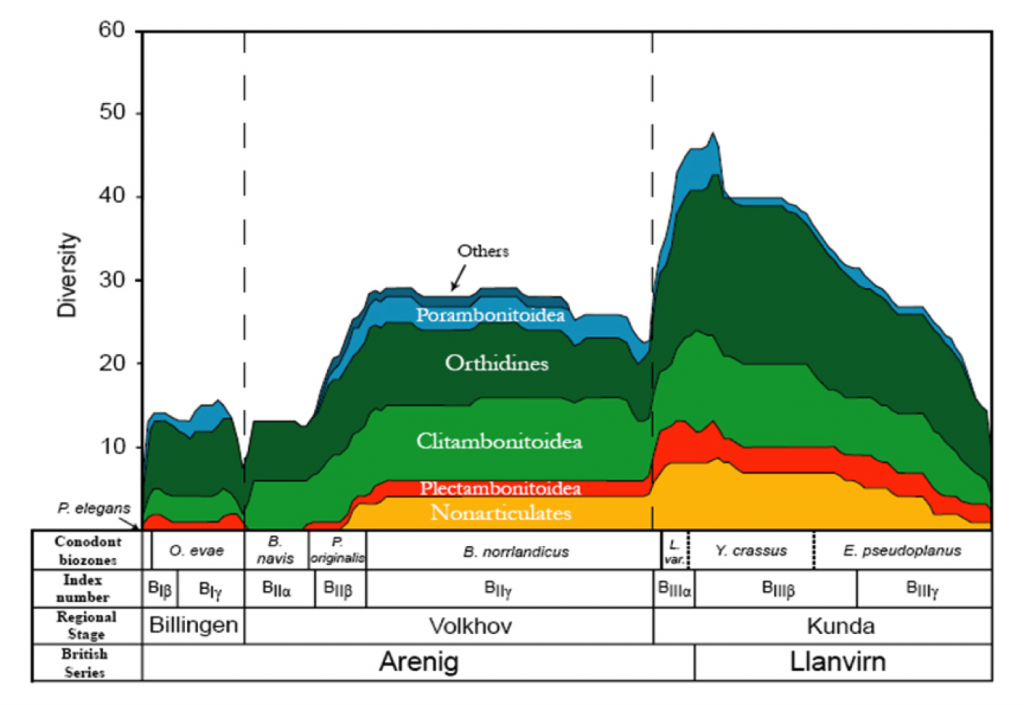
There is evidence of some smaller scale regional diversification events. The Middle Ordovician of western Russia demonstrates a rapid peak in brachiopod diversity. Immediately before this diversification, the sediments contain abundant extra-terrestrial chromite. It has been suggested that a meteor shower cleared large areas of habitat which was subsequently re-colonised by a greater diversity of brachiopods. Courtesy of Christian Mac Ørum Rasmussen, all rights reserved.
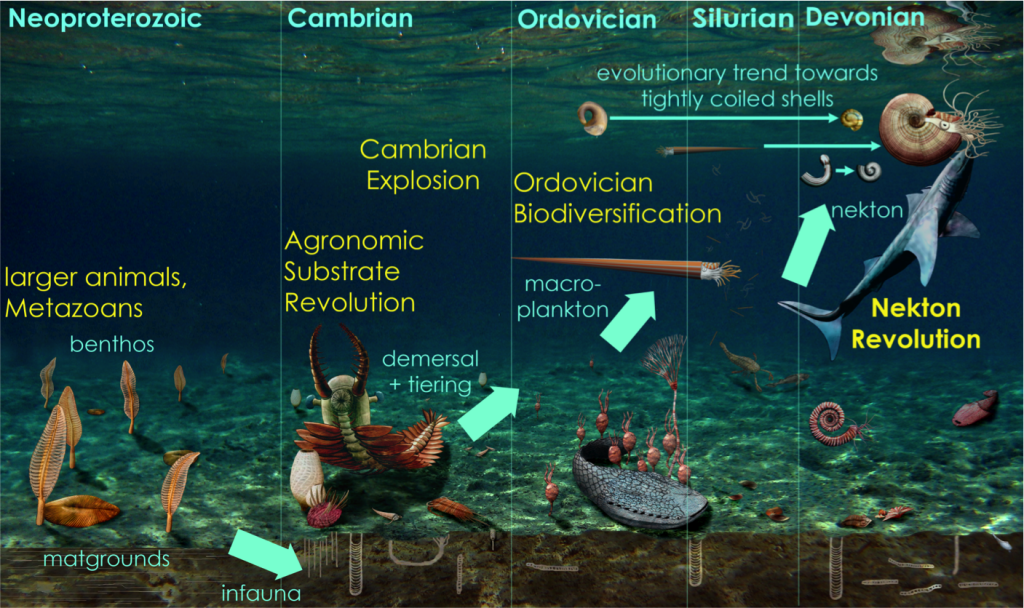
While the GOBE is often considered as a discrete event, Prof. Harper and others have suggested it is part of a larger Palaeozoic marine revolution. This revolution began with the origin of multicellular communities in the Ediacaran Period, which was followed by the evolution of animal body-plans in the ‘Cambrian Explosion’. Following the GOBE, the marine realm continued to diversify and change. Animals left the sea bed and began swimming in the water column during the Devonian nektonic revolution. Picture: Klug et al. (2010) Lethaia. Courtesy of Lethaia Foundation, all rights reserved.
Image credits: Unless otherwise stated, all visual material copyright of Prof. David Harper, all rights reserved.

